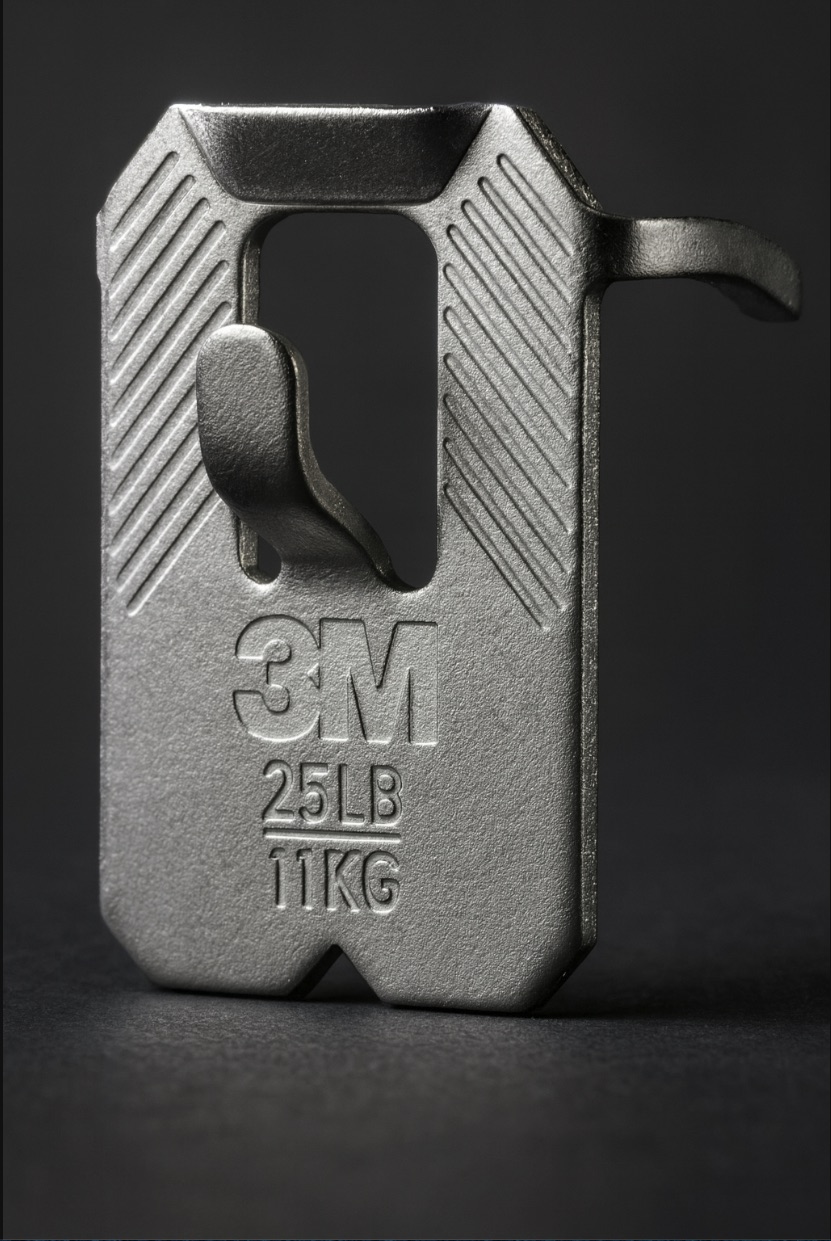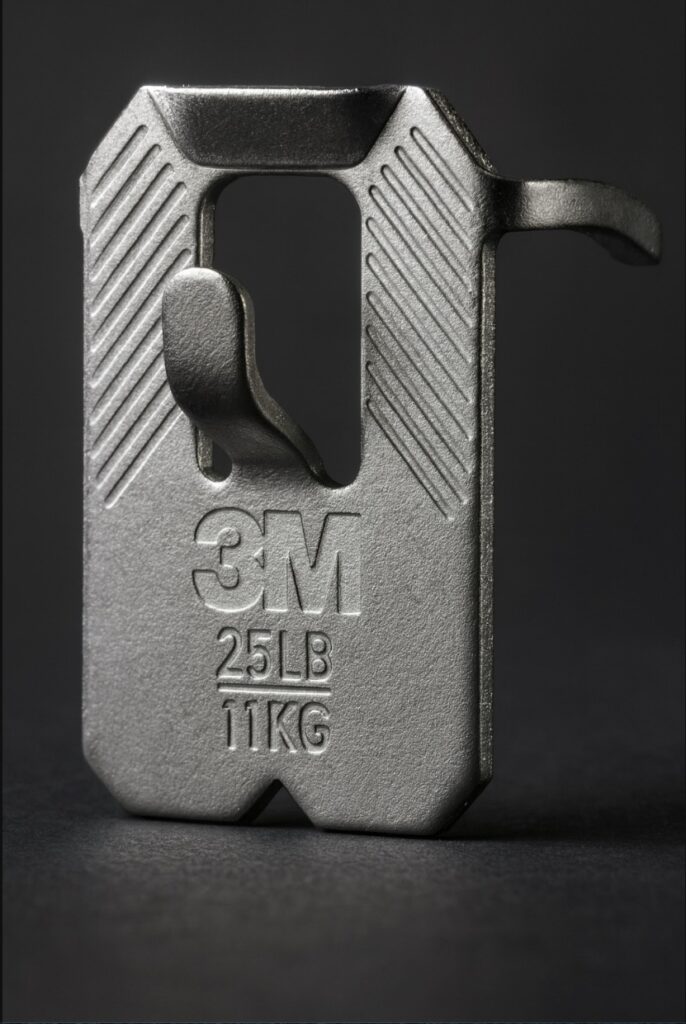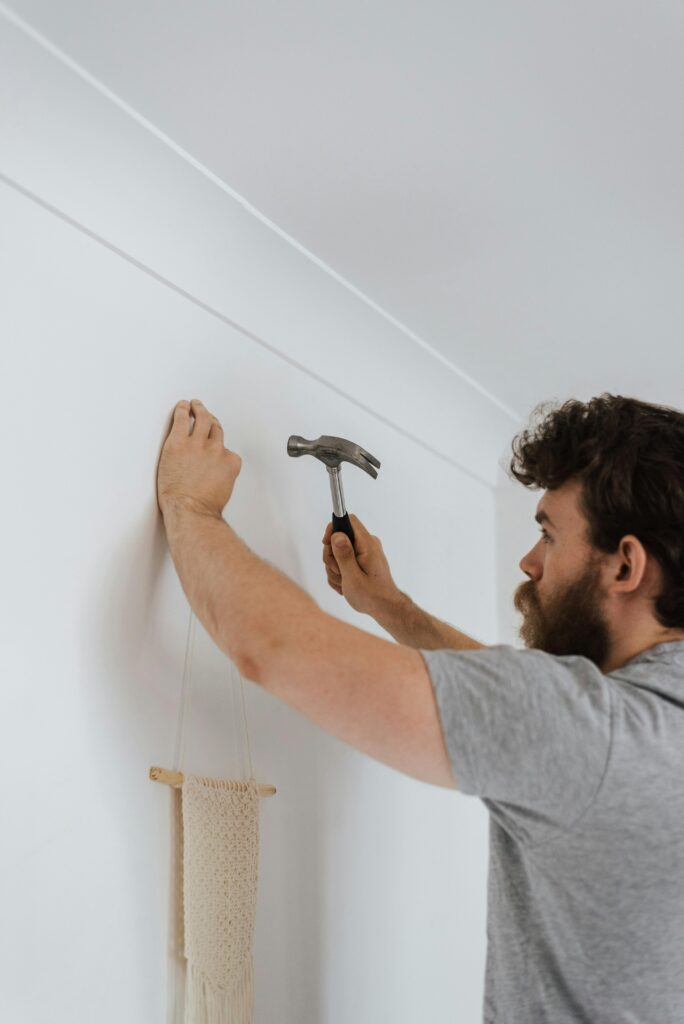
03 Sep What the 3M claw hooks can teach you about design philosophy
Finding profound lessons in simplicity, constraints, and functionality

As a designer, I’ve always believed inspiration can come from the most unexpected places. For me, that moment of inspiration struck while holding a 3M CLAW drywall picture hanger.
It’s an unassuming tool — a hook made to hang heavy objects on drywall without studs or tools. But I am prone to overthinking, so, here we are. The CLAW is a lesson in simplicity, functionality, and the power of constraints. It’s a reminder that the best designs don’t scream for attention — they quietly solve problems, often becoming invisible in their brilliance.
What started as a simple appreciation for this product turned into a reflection on design philosophy itself. The CLAW embodies many of the principles we strive for in our work at Paraform, and it serves as a perfect lens to explore some of the most profound ideas about good design.
Why less is always more
One of the first lessons the CLAW teaches is the power of simplicity. In design, simplicity isn’t about stripping things down to the bare minimum; it’s about achieving clarity. It’s about removing anything unnecessary so what remains is purposeful and effective.
The 3M CLAW drywall picture hanger is a masterclass in this philosophy. Its singular focus — hanging heavy objects securely on drywall — drives every aspect of its design. There’s no wasted material, no redundant features, and no overthinking. It works so well that you don’t even need to read the instructions to figure it out.
This philosophy echoes Dieter Rams’ principle that “Good design is as little design as possible.” The CLAW embodies this principle, stripping away everything unnecessary while amplifying its effectiveness. It’s a testament to how simplicity not only enhances usability but builds trust.
Simplicity is at the heart of successful product design. It ensures every decision serves a purpose and guides the user toward intuitive, functional solutions without overcomplication.
Constraints breed creativity
Drywall isn’t exactly the designer’s dream material — it’s brittle, lightweight, and unforgiving. Yet the CLAW doesn’t see these characteristics as problems; it sees them as opportunities. Its steel claws are engineered to grip drywall securely without damaging it, distributing weight in a way that defies its structural weaknesses.
This is the beauty of constraint-driven design. Far from being limiting, constraints often push us to think differently, forcing innovative solutions that wouldn’t emerge in a world of infinite possibilities.
In our product concept development work, we often encounter challenges that require creative thinking. Whether it’s limited resources or strict functional requirements, constraints guide us to explore possibilities we might otherwise overlook.
A great example of constraints driving innovation is the CLAW’s clever use of physics to grip drywall without tools or studs. Similarly, mechanical product design thrives on turning limitations — like material properties or durability requirements — into opportunities for breakthroughs.
Function over form
The CLAW isn’t flashy, and it doesn’t need to be. Its beauty lies in its purposefulness. It’s a tool that works seamlessly, quietly solving a specific problem without fanfare.
This philosophy — prioritising function over form — is a cornerstone of great design. That’s not to say aesthetics aren’t important; they are. But when aesthetics take precedence over functionality, the design often fails.
Prototyping plays a crucial role in ensuring functionality-first thinking. Through iterative prototyping, we test and refine solutions to achieve designs that work as intended while still being visually appealing. The CLAW demonstrates how purpose-driven design can succeed without unnecessary embellishments.
The psychology of simplicity
Simplicity isn’t just practical — it’s emotional. There’s something deeply satisfying about a product that works effortlessly. It builds trust, makes life easier, and often becomes indispensable without us even realising it.
The 3M CLAW drywall picture hanger taps into this emotional connection. By being intuitive and reliable, it creates a sense of confidence in the user. You don’t have to worry if it will hold up your heavy mirror or prized artwork — you just know it will.
This trust is the hallmark of designs created with user interface prototyping. When a product resonates emotionally and intuitively with users, it becomes part of their lives effortlessly, much like the CLAW.
Durability, sustainability and designing for the long term
Good design stands the test of time. It’s not trendy or disposable — it’s enduring. The CLAW embodies this by being durable, reusable, and effective across countless uses.
Durability isn’t just about practicality — it’s a cornerstone of sustainability. In a world increasingly focused on reducing waste, designing products that last is one of the most impactful things we can do. The CLAW’s longevity ensures it doesn’t end up in the landfill after a few uses, aligning with the principles of environmental product design.
Big lessons from a tiny hook
The 3M CLAW drywall picture hanger may be small, but the lessons it teaches are profound. It’s a reminder that great design doesn’t have to be loud or complex. It can be quiet, simple, and effective.
From embracing constraints to focusing on functionality and sustainability, the CLAW offers a blueprint for how we can approach design at every level. It challenges us to think differently, to strip away the unnecessary, and to create products that truly make a difference.

Why great design whispers, not shouts
The 3M CLAW drywall picture hanger is a testament to how even the smallest, most unassuming tools can hold profound lessons for design. It’s not just about functionality — it’s about the way a product can embody simplicity, navigate constraints, and create trust with its users.
For me, the CLAW serves as a reminder of what great design should strive to achieve. It’s not about shouting for attention or chasing trends. It’s about solving real problems in elegant, thoughtful ways. It’s about building products that feel intuitive and resonate deeply with the people who use them.
At Paraform, we approach every project with these principles in mind. Whether it’s simplifying a complex system, iterating through constraints, or designing for sustainability, the goal is always to create something enduring — something that whispers its brilliance rather than demands it.
Great design isn’t just about the objects we create. It’s about the values we bring to the process. When we strip away the unnecessary, embrace the challenges, and centre the user, we create work that doesn’t just serve its purpose — it leaves a lasting impression.
If you’re looking to create products that embody these principles, let’s talk. Together, we can take inspiration from tools like the CLAW to design solutions that aren’t just functional but deeply impactful. Because in the end, the best designs are the ones that quietly transform how we interact with the world.



